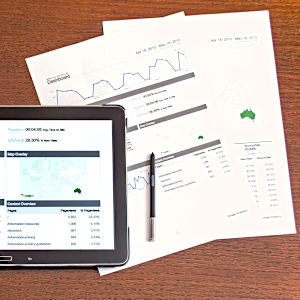
- January 31, 2023
- Comments: 0
- Posted by: user
Most businesses and that includes long running businesses as well as new ones, have only a hazy idea of what they are spending as a business over time. That means they don’t know where they can improve or how to plan for the short term future as well as the long term health of their business.
You really do have to spend money to make money but there are only two ways for a business to turn a profit.

One is to sell more. This is what people focus on because it’s an easy one to track. “How much money did we make today? Wow! That’s a lot!”
The other way is to reduce costs and overheads. “But we made SO MUCH money! Why did we go out of business?” The answer to that is that profit is what you make MINUS what you spend.
Keep in mind that this is a general guide. Every business and industry is different. Some have fixed costs, some have fluctuating costs (just look at what inflation and the war in Ukraine are doing to most bottom lines for example).
The idea behind this guide is for YOU to identify what’s important, where you can save, what you can improve and maybe even where you should be spending more. There is nothing wrong with spending more money if it raises your profits – just so long as it really does raise your profits. But having a budget means you won’t fall into the trap of not realising you are in too deep until it’s too late.

But don’t forget, your accountant is trained in this and can prepare a budget for you or at least offer advice. If you are sensible, you are using cloud accounting software and this software can help you with preparing a budget.
- 1. Research. Do some research and work out what your operating costs are. Don’t be too pedantic. You just need a rough idea of what you are spending money on. If you have ever done a profit and loss report then that is a good place to start. There are plenty of free templates online for this and your accountant can help as well. Keep in mind that over budgeting (within reason) is better than under budgeting.
- 2. Costs. Once you have a rough idea you should then look at analysing those costs. Break them down into categories.
- Fixed (things like rental costs, wages, interest on debt, etc, etc).
- Variable (things like the cost of supplies).
- One-off (you just bought a second hand truck)
- Unexpected costs (while fitting out your brand new shop front you had to redo the entire plumbing system).
- 3. Work out how much you think you will be making (cash flow and gross profit margin). The ratio of costs in point 2 can vary. Brand new businesses face very different challenges to established businesses. Some industries are facing constantly changing circumstances that mean they have to have some cash stashed for emergencies but also for growth. Others are far more stable. Keep an eye on what you are making because the more you make the more you will probably have to spend. The goal is always to try and balance what is going out against what is going out. One example is the cost of supplies (which, at the moment, may be rising month by month). Or maybe that truck you bought for deliveries. Can you see from your revenue that you will probably have to buy another one mid year? Again, the other reason to keep an eye on your cash flow and have a budget is to make certain you are balancing the money coming in against the money going out.
- 4. Make predictions for the future. This can be really hard. The war in Ukraine has raised fuel prices which has affected the supply – and cost, of almost everything. There was no way to predict that. On the other hand, if you supply fruit juice then you probably have a keen grasp of seasonal variations in fruit prices. You need to keep in mind cycles that affect you. Many business (tourism is the classic here) do really well at certain times but poorly at other times. Always look at how your business does over time. That may allow you to identify things that you may only need to pay for at certain times – not all year around.
- 5. Goals. If you know what you are aiming for then you also know what you are NOT aiming for. One key thing about a budget is that you want to identify what you NEED to spend money on. What might be useful or advantageous to spend money on. What might be nice but is not critical. But also what you DO NOT need to spend money on. Everything you identify as a cost should be examined and justified. You should also work out what is a long term cost that you will always have. What is a short term expense (which means you will eventually be able to spend that money on something else). Also factor in possible goals that will require one off expenses. For example, a second delivery truck would be great. But should I purchase it next month – or next year? A clear budget might allow you to set that as a goal only if you reach certain criteria (how much revenue you need to be making before risking a large expense – like another truck).
- 6. Do the budget! Once you have done all the work you can actually draw up a budget. Once you have taken out all of your various expenses you will be able to see what you have to work with. IT will also let you look at those expenses, know what they are and work out how to reduce them. Or if you should be spending any money on them at all – or at least at the level they are now. Talk to suppliers to see if you can work out a better deal. Make decisions about labour costs. How big a dent are interest costs and is paying more early a good idea? You can’t predict everything but you can make some educated guesses as to what unexpected costs or hiccups might lie ahead. Your budget should include reserves of cash in case you need it.

Finally, have your accountant take a look at your budget. They are trained in profit and loss and might spot something important you have missed. Use the budget as a guide. There may be times when you are tempted to dump it. That’s fine but crunch the numbers first to make sure it’s a good idea and sustainable.
